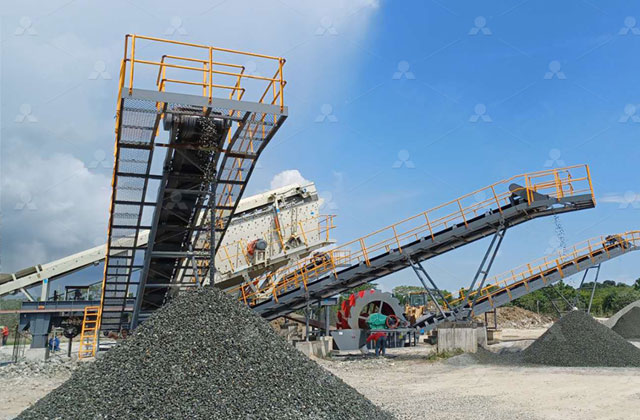A vibrating screening machine is a crucial piece of equipment in the aggregate production industry, used to separate and grade materials based on size. It is designed to handle large volumes of material efficiently while ensuring that the output meets the required specifications for the intended use. This equipment is essential in producing high-quality aggregates, which are used in construction, road building, and other industries that require materials like sand, gravel, and crushed stone.

Function and Working Principle
The primary function of a vibrating screen is to separate mixed materials into different grades by particle size. It works based on the principle of vibration and mechanical motion. The screen consists of a series of woven or perforated mesh panels arranged in a horizontal or inclined manner. The machine generates a vibrating motion through an electric motor or a similar power source, which induces the materials on the screen to move in a specific pattern.
As the aggregate material is fed onto the vibrating screen, it is subjected to multiple vibrations. The different sizes of aggregates pass through the mesh openings while larger particles are retained on the surface. The material that passes through the screen is further processed or sent to different stockpiles for use. The vibration ensures that even the finest particles move through the screen mesh, making the separation process highly efficient.
Types of Vibrating Screens
There are several types of vibrating screens used in aggregate production, each suited for specific applications:
- Linear Vibrating Screens: These screens produce a straight-line motion, ideal for screening large volumes of material where uniform separation is necessary. The linear motion ensures that the material moves evenly across the screen.
- Circular Vibrating Screens: These produce a circular motion and are typically used for fine screening or materials that need to be separated into several grades. The circular motion helps to reduce clogging and ensures that the particles are evenly distributed.
- Inclined Vibrating Screens: These screens are set at an angle to allow gravity to aid in material separation. The inclination of the screen helps to increase the speed of material movement, making it ideal for materials that need to be separated quickly.
Key Features of Vibrating Screening Machines
- High Efficiency: The vibrating motion of the screen allows it to handle a large volume of material while efficiently separating aggregates into multiple grades. The high-frequency vibrations ensure that even smaller particles pass through the mesh.
- Adjustable Amplitude and Vibration Frequency: The amplitude and frequency of the vibrations can be adjusted to suit the material being screened. Larger particles may require a higher amplitude, while finer particles benefit from increased frequency.
- Durability: Vibrating screening machines are built to withstand harsh working conditions, with components such as the screen mesh and frame designed for long service life. The screens are often made from high-strength materials like steel or polyurethane to resist wear and tear.
- Customizable: Depending on the specific requirements of the aggregate production process, vibrating screens can be customized with varying mesh sizes, deck configurations, and motor specifications.
Vibrating screening machines are indispensable for efficient and effective aggregate production. Their ability to separate materials based on size, while handling high volumes and ensuring accuracy, makes them essential for industries requiring various grades of sand, gravel, and crushed stones. With their adaptability, durability, and high throughput capacity, vibrating screens play a crucial role in ensuring that aggregates meet the required specifications and quality standards.
